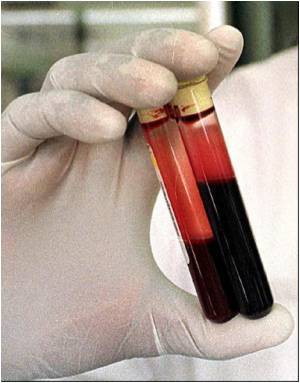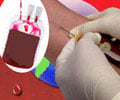A new technique that can find whether the blood used for transfusions is old or new thus providing a cheap and an effective way to monitor the quality of blood supplies.

Dr Jay Mehrishi, PhD, FRCPath (a Fellow of the Royal College of Pathologists), formerly of the Department of Radiotherapeutics and Medicine (now called the Department of Haematology) at the University of Cambridge and one of the lead authors of the study, said: "Recent trials on cardiac surgery patients involving over 40,000 patients showed that transfused blood which was older than 14 days produced serious side effects.
"The side effects of transfusing old blood are thought to result in acute lung injury and possible adverse effects of the immune system. In severe trauma patients, transfusion of blood stored for more than 28 days doubled the incidence of deep vein thrombosis and increased death secondary to multiple organ failure. Our research will hopefully highlight the significant differences between old and new blood used in transfusions as well as the possibility of using our technique to quickly and cheaply monitor blood supply quality."
The electrical properties of red blood cells have previously been used to distinguish between foetal and adult haemoglobin as well as the mutated form of haemoglobin found in sickle cells from normal haemoglobin. Now, using the unique electrical properties of red blood cells, Dr Mehrishi, working with Professor Yao-Xiong Huang from the Ji Nan University in China, used fluorescence from the positively charged quantum dots, which had been bound to electrical charges on the negatively charged cells to discriminate between old cells (which had diminished in quality) and young cells.
On young red blood cells (left of the figure) the fluorescence was intense bright, indicating that the surface architecture was intact. Whereas on the older red blood cells (right of the figure), the fluorescence was almost zero and the cells shown significantly darker, indicating that there had been a substantial loss of the electrical charges, indicating the cell membrane integrity had been compromised. It is recognised that such damaged cells are not useful for transfusions because the body eliminates them from circulation quite quickly.
Dr Mehrishi continued: "This study is the culmination of decades of research into blood cells, and a collaboration with the skilful Professor Huang - persevering with his expertise and team - and I am thrilled that for the first time visual imaging has provided evidence for the quality of the red blood cells.
Advertisement
In addition to its use as a monitoring technique for the quality of blood stored in blood banks, Dr Mehrishi believes that it could also be used to ensure a high quality of 'cleaned up' blood (older blood which has had the leaked biomaterials removed), which is of immense practical clinical importance worldwide.
Advertisement
"Our novel approach is also likely to be of practical value in clinics before, during and after therapy, for such problems as circulatory disorders, abnormal red cells, macrophages - e.g.in Gaucher disease -, respiratory physiology, hypoxia, high-altitude mountaineers, residents at high altitudes, etc."
The findings have been published in the Journal of Cellular and Molecular Medicine.
Source-Eurekalert












